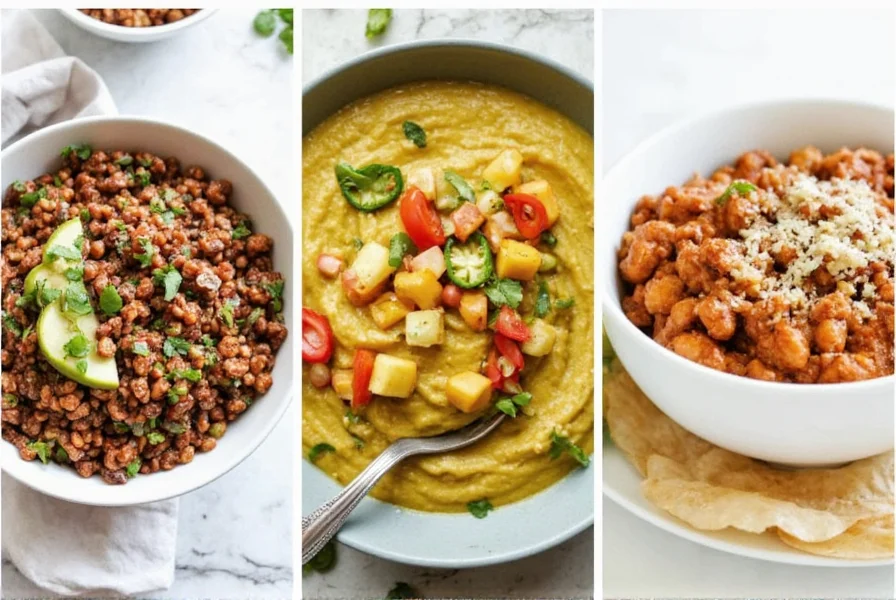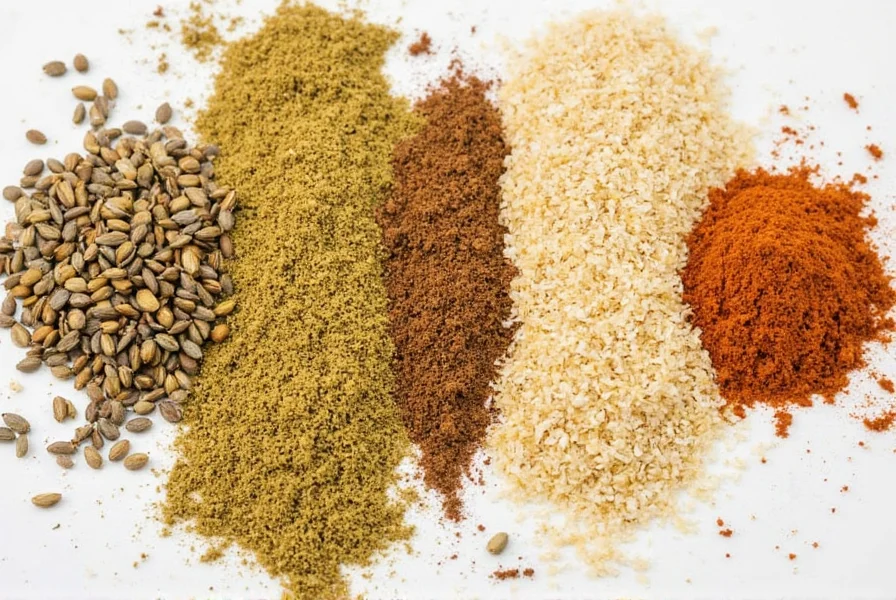Table of Contents
Introduction to Grains of Paradise
Grains of paradise (Aframomum melegueta) are small, aromatic seeds from a tropical plant native to West Africa. Despite their name, they are not related to black pepper but belong to the ginger family. These seeds have been used as a spice for centuries, prized for their complex flavor profile of citrus, floral notes, and subtle heat. In this guide, we'll cover everything you need to know about grains of paradise, including their history, culinary uses, and how to buy the best quality.

What Are Grains of Paradise?
Grains of paradise (Aframomum melegueta) are small, peppercorn-like seeds harvested from the Aframomum melegueta plant, which grows in West African countries like Ghana, Nigeria, and Cameroon. The plant produces red berries containing the seeds, which are dried and used as a spice. Historically, during medieval times, grains of paradise were used as a substitute for black pepper when pepper was scarce or expensive in Europe. Today, they are valued by chefs for their unique flavor and versatility in both sweet and savory dishes.
According to culinary experts and historical records, grains of paradise have a complex flavor profile that combines heat, citrus, and floral notes. This makes them a favorite for adding depth to recipes without overwhelming other flavors.
Flavor Profile and Uses
Grains of paradise offer a distinctive taste often described as a blend of black pepper, cardamom, and citrus. They are less intense than black pepper but provide a more nuanced flavor with subtle sweetness and a bright, lemony finish. The heat builds gradually, making it ideal for dishes where you want complexity without excessive spiciness.
Common culinary uses include:
- Ground: Perfect for spice blends, rubs, or seasonings for meats, vegetables, and desserts.
- Whole: Toast and grind fresh for maximum flavor, or use whole in infusions for cocktails or broths.
- Infused Oil: Add to olive oil or butter to create a flavorful base for sautéing or finishing dishes.
They pair exceptionally well with rich ingredients like roasted meats, stews, and hearty vegetables. Chefs also use them in artisanal beers and craft cocktails for a unique spicy twist.
Practical Tips for Using Grains of Paradise
Here are expert tips to maximize the flavor of grains of paradise:
1. Toast Before Using
To enhance aroma and flavor, toast the seeds in a dry pan before grinding. This releases essential oils and makes the spice more vibrant.

2. Use Sparingly
Due to their strong flavor, start with a pinch and adjust to taste. A little goes a long way in most recipes.
3. Pair with Complementary Flavors
Combine with citrus, garlic, chili, or warm spices like cinnamon for balanced dishes. Experiment with different combinations to find your preference.
4. Infuse in Liquids
Add whole seeds to broths, stocks, wine, or even coffee for an unexpected flavor dimension.
5. Store Properly
Keep in an airtight container in a cool, dark place. Whole seeds retain freshness longer than ground; ground spice should be used within 3-6 months for best quality.
Buying Guide: How to Choose the Best Grains of Paradise
When purchasing grains of paradise, consider these factors for quality and value:
1. Freshness
Look for plump, firm seeds with a strong, pleasant aroma. Avoid brittle or stale-smelling seeds.
2. Source
Authentic grains of paradise come from West Africa. Choose suppliers with transparent sourcing, such as fair-trade or organic certified options for ethical and high-quality products.
3. Form: Whole vs. Ground
Whole seeds are preferred for maximum freshness and versatility. Ground grains lose potency faster but offer convenience for quick use.
4. Packaging
Opt for vacuum-sealed or resealable bags to protect against moisture and air, preserving flavor longer.
5. Price
Grains of paradise are relatively expensive due to rarity. Be cautious of very low prices, which may indicate low quality or adulteration. Premium whole seeds typically cost more but offer better value per use.
| Feature | Whole Grains of Paradise | Ground Grains of Paradise |
|---|---|---|
| Flavor Intensity | High | Moderate |
| Shelf Life | Longer (1-2 years) | Shorter (3-6 months) |
| Usage Flexibility | Higher | Limited |
For optimal culinary results, we recommend purchasing whole grains of paradise and grinding them fresh as needed. This preserves the spice's full aromatic complexity and ensures peak flavor in your dishes.
Frequently Asked Questions About Grains of Paradise
What exactly are grains of paradise?
Grains of paradise (Aframomum melegueta) are small seeds from a plant in the ginger family, native to West Africa. Despite their name, they are not related to black pepper but were historically used as a pepper substitute. These aromatic seeds have been valued for centuries for their distinctive flavor profile.
How do grains of paradise differ from black pepper?
While both offer a spicy quality, grains of paradise provide a more complex flavor profile with citrus, floral, and warm notes. They're less intense than black pepper but more nuanced, with a slightly sweet, almost lemony finish. The heat is more subtle and builds gradually compared to black pepper's immediate bite.
Where do grains of paradise originate from?
Grains of paradise are native to West Africa, particularly along the Gulf of Guinea. They've been used in African cuisine for centuries before being introduced to Europe during medieval times. Today, they're still primarily cultivated in countries like Ghana, Nigeria, and Cameroon.
What does grains of paradise taste like?
They have a complex flavor often described as a cross between black pepper and cardamom with distinct citrus notes. The taste is warm and spicy but not overwhelmingly hot, with a subtle sweetness, floral undertones, and a clean finish that's sometimes compared to ginger or coriander.
How should I store grains of paradise?
Store them in an airtight container in a cool, dark place. Whole seeds will maintain their flavor longer than ground spice - up to 1-2 years compared to 6 months for ground. For maximum freshness, consider freezing whole seeds in a sealed container, which can extend their shelf life even further.
Can I substitute grains of paradise with other spices?
While there's no perfect substitute, you could try a combination of black pepper, cardamom, and a touch of citrus zest. For recipes specifically calling for grains of paradise, the unique flavor profile may be difficult to replicate exactly, but this blend can approximate some of the characteristics.
Are grains of paradise expensive?
Yes, they tend to be more expensive than common spices like black pepper due to their relative rarity and specialized cultivation. However, a little goes a long way, making them cost-effective for special recipes. Prices can vary based on quality, with premium whole seeds typically costing more than ground versions.
What are the health benefits of grains of paradise?
Traditional medicine has used grains of paradise for digestive issues and as an anti-inflammatory. They contain antioxidants and may support metabolism, though scientific research is limited. Like many spices, they're best enjoyed as part of a balanced diet rather than as a medicinal supplement.
Conclusion
Grains of paradise represent a unique culinary treasure with deep historical roots and versatile applications in modern cooking. Whether you're a professional chef or home cook, these West African seeds offer an opportunity to elevate dishes with their distinctive citrus-spicy complexity. Always prioritize whole seeds for maximum freshness, and remember that a little goes a long way in achieving the perfect flavor balance.
As you continue to explore global spices, grains of paradise serve as a reminder that culinary innovation often comes from unexpected sources. Their journey from West African markets to international kitchens demonstrates how traditional ingredients can transform contemporary cuisine when used with care and knowledge.










 浙公网安备
33010002000092号
浙公网安备
33010002000092号 浙B2-20120091-4
浙B2-20120091-4